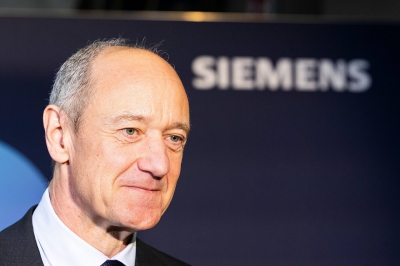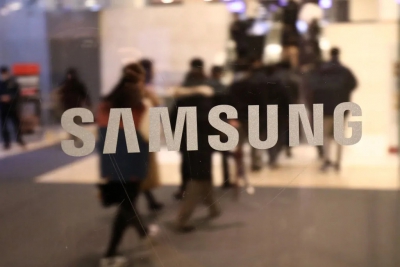
According to TechSpot, storage industry giant Western Digital recently announced a major strategic adjustment and officially withdrew from the solid-state drive market competition.
According to the company's announcement, Western Digital's NAND flash memory business has been completely divested through a split, which means that the company will completely stop the production, manufacturing and marketing of its own brand solid-state drives. It is worth noting that although Western Digital no longer directly operates the related business, it will still maintain an important influence in the storage market through its wholly-owned subsidiary SanDisk's full takeover.
For end consumers, the highly acclaimed star products such as WD_Black SN850X will gradually withdraw from the stage of history, and will be replaced by innovative products of SanDisk's own brand. Senior user groups generally understand that Western Digital solid-state products are essentially the market application of SanDisk technology. This brand switch is more of a business strategy adjustment rather than a technological change. According to supply chain news, SanDisk is preparing a product matrix based on the new generation of 232-layer 3D NAND technology, which is expected to cover all scenarios from mobile storage to enterprise-level solutions.

Recently, Sandisk Corporation has completed its separation from Western Digital Corp., becoming an independent public company and beginning trading on the Nasdaq stock market under the ticker symbol "SNDK". This major event marks a new change in the storage industry and opens up a new path for Sandisk's own development.
From a business perspective, an independent listing gives SanDisk more room for independent decision-making, freeing it from possible constraints with Western Digital in business integration and strategic planning, and enabling it to respond more flexibly to market changes.
WDC started out as a hard disk drive (HDD). In 2011, it spent $4.3 billion to acquire Hitachi HGST, which gave it absolute say in the HDD field. With the emergence of solid-state drive (SSD), the HDD market share has gradually declined. In order to consolidate its market position, WDC spent $16 billion to acquire Sandisk in 2016 and entered the NAND flash memory business.
At that time, the storage market was in a period of rapid change. The growth of the hard disk (HDD) market gradually stabilized, while the market demand for solid-state drive (SSD) rose rapidly due to their advantages such as high-speed reading and writing and low energy consumption. Western Digital has a deep foundation in the HDD field, but its layout in the SSD field is relatively lagging behind; SanDisk is a pioneer in flash memory technology and occupies an important position in the NAND flash memory and SSD markets. The acquisition aims to integrate the technological advantages of both parties, achieve business complementarity, and create a giant enterprise that is fully leading in the storage field to meet the challenges of competitors such as Samsung and Seagate.
After acquiring Sandisk, Western Digital did have a few years of happy times, but also experienced fluctuations. As it was playing, it discovered that the HDD business was in trouble because the NAND flash memory business was trapped again. Since 2021, Western Digital (WDC) and Kioxia have begun to cooperate on NAND flash memory technology. This cooperation aims to improve the production efficiency and reduce the cost of NAND flash memory by sharing resources and technologies, so as to gain greater competitive advantages in the highly competitive storage market. It was originally expected that the merger could be completed last year, but it failed due to SK Hynix! The stock market fell in response.
In terms of technology research and development, the post-acquisition integration has achieved certain results. With the help of SanDisk's flash memory technology, Western Digital has accelerated its layout in 3D NAND flash memory technology. Since then, Western Digital has launched a number of storage products using new flash memory technology, which have significantly improved key performance indicators such as storage density and read and write speed, enhancing the competitiveness of products in the market. For example, in the field of enterprise-level storage, Western Digital uses SanDisk's technology to optimize data center storage solutions, providing more efficient storage support for cloud computing, big data analysis and other businesses.
Judging from the financial report data, in the early stage after the acquisition, the overall financial performance was not ideal due to the high cost of business integration and fierce market competition. In terms of revenue, although the size of the merged company has expanded, its share of the SSD market has grown slowly and failed to meet the expected target. In terms of profit, in fiscal year 2017-2018, due to price fluctuations in the flash memory market and increased operating costs during the integration process, the company experienced a decline in profits. However, with the deepening of technological integration and the gradual adaptation of the market, revenue and profits rebounded in fiscal year 2019-2020. However, starting from fiscal year 2022, SanDisk's business revenue has declined, from US$9.75 billion in fiscal year 2022 to US$6.66 billion in fiscal year 2024, and losses and negative free cash flow occurred in fiscal years 2023 and 2024, which also dragged down Western Digital's overall financial performance.
Activist investor Elliott Management played a key role in the spin-off process. In May 2022, Elliott disclosed its stake in Western Digital and called for the spin-off of SanDisk. They believe that Western Digital's acquisition of SanDisk has failed to fully realize synergies, and the different characteristics of the HDD and SSD businesses make integration difficult. Separating the two and focusing on their core businesses can improve operational efficiency and release greater shareholder value.
Since Elliott proposed the spin-off in 2022, Western Digital and SanDisk have gone through a long and complex process of strategic evaluation, asset division, business restructuring, etc. During this period, a large amount of financial audits, legal procedures and personnel deployment were involved. On February 24th, 2025, SanDisk officially completed its separation from Western Digital, became an independent listed company, and began trading on Nasdaq with the code "SNDK", marking the final completion of the spin-off.

Expected performance of SanDisk after its independent listing
After becoming independent, SanDisk is expected to take greater steps in flash memory technology innovation. Freed from some constraints during the integration process with Western Digital, SanDisk can invest more resources in research and development. It is expected that SanDisk will further improve storage density and read and write speeds in 3D NAND flash memory technology, and develop more advanced flash memory architectures to meet the needs of emerging fields such as artificial intelligence and big data for high-speed and large-capacity storage. At the same time, SanDisk may increase its research and development efforts in flash memory controller technology, optimize data management and transmission efficiency, reduce power consumption, and improve overall product performance.
However, SanDisk also faces many challenges, such as Samsung's leading position in flash memory technology and market share, and Kioxia's outstanding performance in NAND chip commercialization. SanDisk needs to continuously improve product performance and service quality to stand out in the fierce market competition.
The process of Western Digital and SanDisk from acquisition to spin-off is a microcosm of the development of the storage industry. This series of events not only reflects the strategic adjustments of enterprises in market competition and technological changes, but also has a profound impact on the overall storage industry. In the future, the performance of SanDisk and Western Digital after independent development, as well as their role in promoting the storage industry, deserves continued attention from investors and industry observers.













